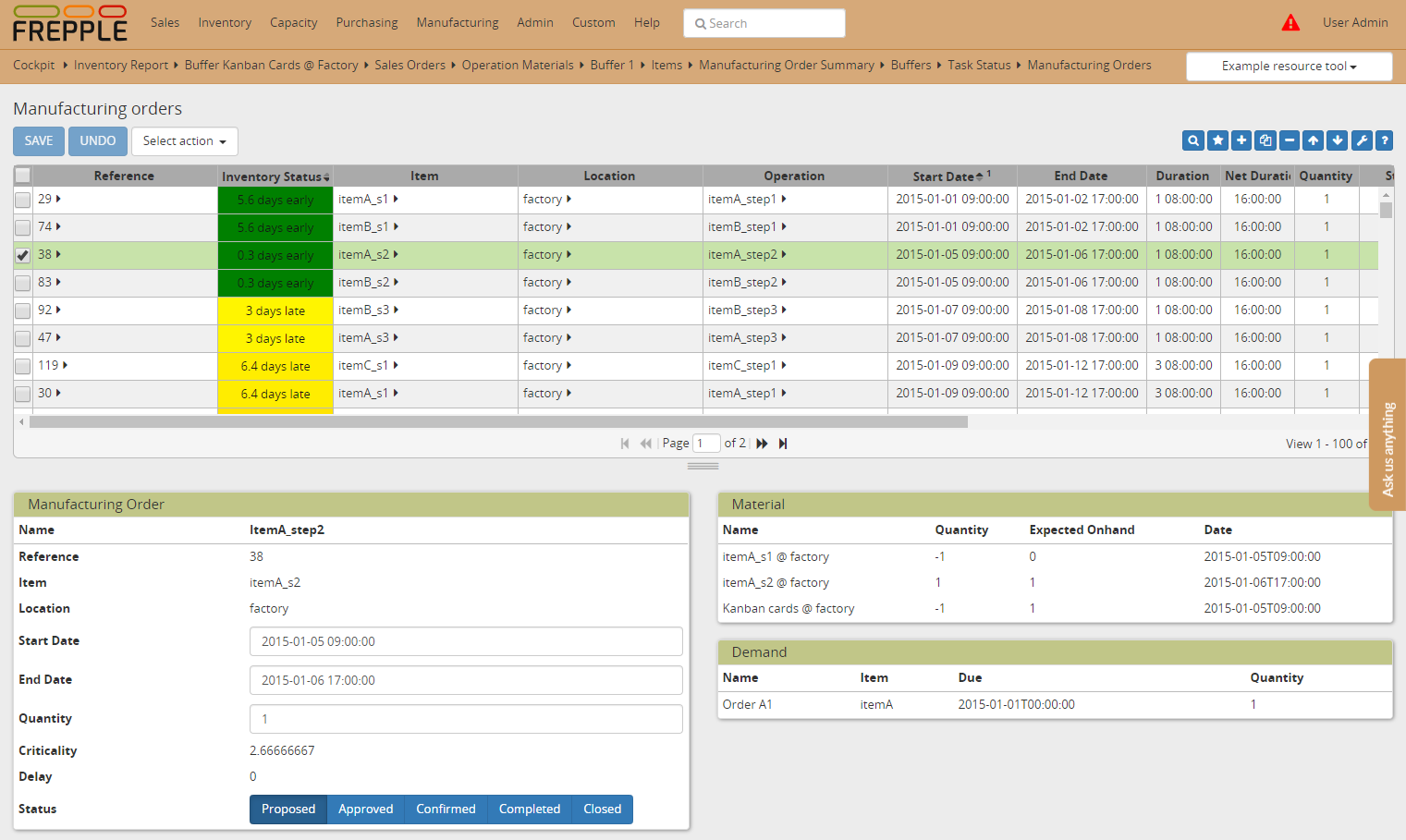Tools
Tools are resources that are claimed at a certain operation and released
again at a later operation. They stay with the job between those operations.
They can be physical: e.g. moulds, fixtures, tooling, …
They can also be virtual: e.g. electronic kanban/QRM cards to limit the
work-in-progress in a certain manufacturing cell.
Check this feature on a live example
Download an Excel spreadsheet with the data for this example
- They are modeled as a buffer for which the subcategory field is set to “tool”.The operation that claims the tool gets an operation-material record to consume the tool item.The operation that releases the tool get an operation-material record to produce the tool item.The flows are typically (but not necessary) of type “fixed_start” and “fixed_end” to keep the tool quantity independent of the size of the manufacturing order quantity.
- In this example we have a production consisting of 5 subsequent steps.We model a (virtual) tool to control the level of work-in-progress across the operations 2 through 4: only 2 jobs are allowed simultaneously in this cell. You can think of this as a kanban card which we need to obtain when entering the cell, and which we release when leaving the cell.
- Use the manufacturing order report to verify that the kanban card constraint is correctly respected. You’ll find that new operations at step 2 are only created at the moment when an operation at step 4 finishes (respecting also the working hours of the location, of course).

- You can change the initial inventory of the kanban cards in the buffer table to see how it impacts the delivery performance.How many cards do you need at least to bring the lateness to its minimum? And can you explain that result?
